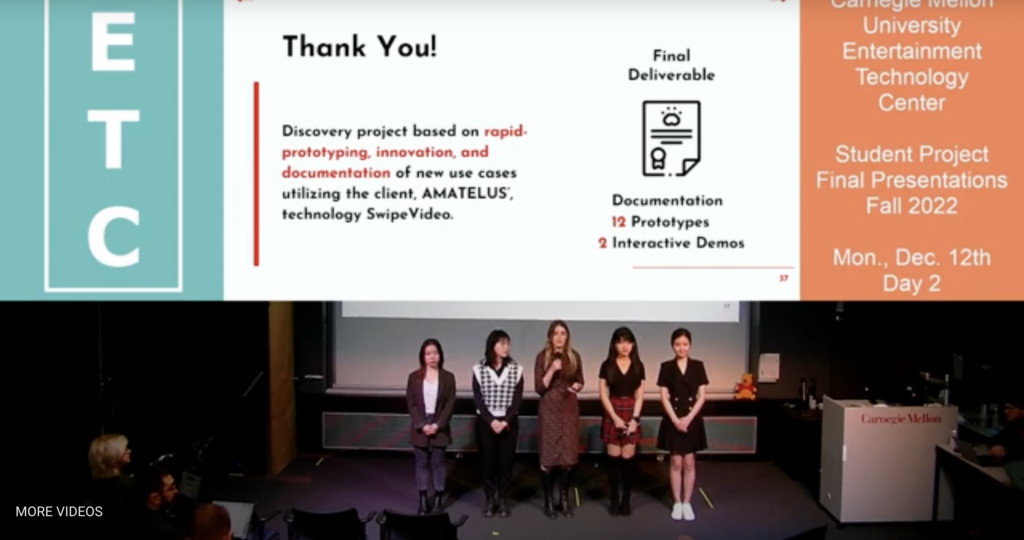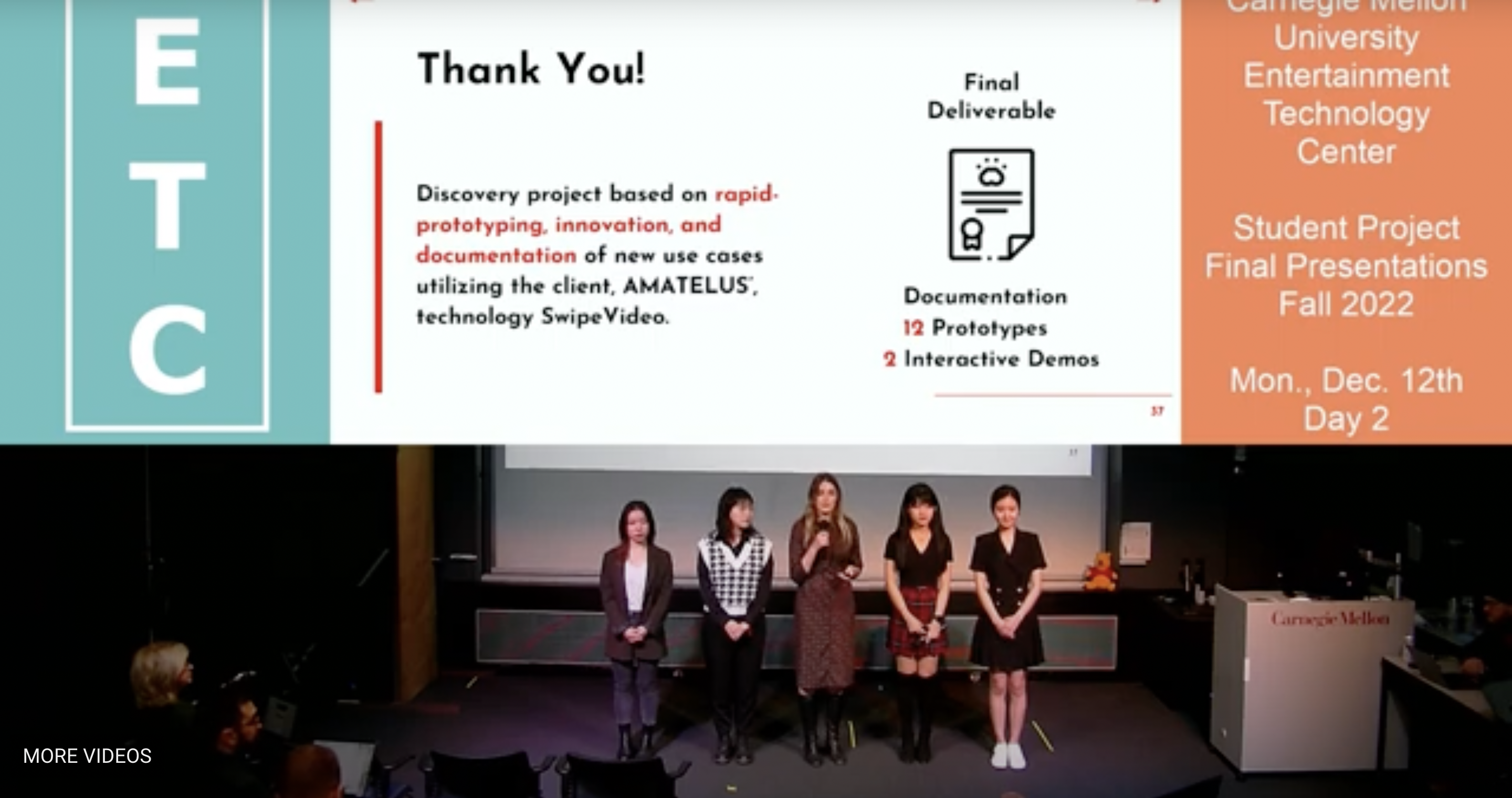A summary of our semester:
AMATELUS came to the ETC seeking a team to bring a creative element to the product. The task itself was very open-ended bringing an interesting challenge at the beginning of the semester.
Organizing our concepts and establishing our pipeline for each prototype, was very different than project semesters where there is one final product. Organization of the brainstormed concepts into different categories was one of the best decisions the team made early on in the process. We were able to plan for the prototypes we were going to explore, which meant more efficiency and little-to-no buffer between the production of the prototypes.

As the team only had one programmer, we also had to pursue concepts within the scope of time and skillset. We established a pipeline, where projects that required both UI/UX and programming would be traded off weekly. For example, for SwipeNature, a game demo of how SwipeVideo could work in an educational game, the artists created assets for a week, while Lucy worked on a different prototype. For the next week, they switched prototypes. Certain prototypes required only certain skill sets, so as a team we divided the concepts and worked in smaller teams of 1-3, to efficiently prototype. Our process was also aided by every team member’s willingness to help each other, even though multiple prototypes were being explored simultaneously by different team members.
Three related concepts that excited the client were our Depth Camera, AR Filter prototypes, and motion-capture pipeline. For the depth camera prototype, we developed a pipeline that transforms information captured by depth cameras. We successfully made a pipeline that transforms the portrait picture into a mesh with processing. For this prototype, we found out that the depth cameras of iPhones are not accurate enough to stitch pictures taken from different angles together.
For the AR filter prototype, we thought that we may add an AR feature to the SwipeVideo application camera so that people may add creative virtual items to the scene. It enables users to add more creative elements to the product; however, we found out that we lack a source of the 3D models to be added to the scene. Thus, in the future, Swipe/video should also develop an online 3D model shop to import 3D models into this AR filter. For the affordable motion capture pipeline prototype, we designed a pipeline that uses the depth camera to generate 3D models, mapping that with the skeleton animation that is extracted from the SwipeVideo. We achieved a high-level design of an affordable motion capture pipeline for content creators with limited budgets.
On the UI/UX side, it was an interesting challenge to distribute the workload among three designers as well as rapidly-prototyping these designs. In the past, the members of the team had limited experience rapidly-prototyping UI/UX designs and proofs-of-concept. Their previous projects were longer and required many iterations following usability testing. While we did conduct usability tests and make iterations, we often had to move on to the next prototype for time’s sake. Any further iterations we would make would be mentioned in the documentation.
The conclusion the team reached in our documentation was that SwipeVideo should look into UGC (User Generated Content) as it would increase critical mass and help SwipeVideo “cross the chasm” into mainstream adoption. To do this, the UI/UX of the SV Cam application should be altered, as currently there is a moderate barrier to entry due to layout and technical difficulties. SwipeVideo might also look into a viewing platform that would allow multiple SwipeVideos to be watched, as currently they are all individual links or embedded into websites. Building on this, based on our personal experiences and the playtesters’ feedback, people seem interested in creating SwipeVideos collaboratively. Allowing users to create content with a team locally or even strangers online is interesting to playtesters. For several of our prototypes, we focused on features that would allow for social engagement with the content: such as a comment section, like button, etc. These features, which are seen all over social media platforms, might aid SwipeVideo in building its user experience and user base.
Our team gained skills in rapid prototyping and designing experiences from scratch based on a very open-ended prompt from our client. We learned how to work in a UI/UX-heavy team, as well as the process of documentation for a client. Now, AMATELUS is using our documentation to inform their next steps for SwipeVideo and has access to our code and other technical documentation so they could easily implement our designs.



